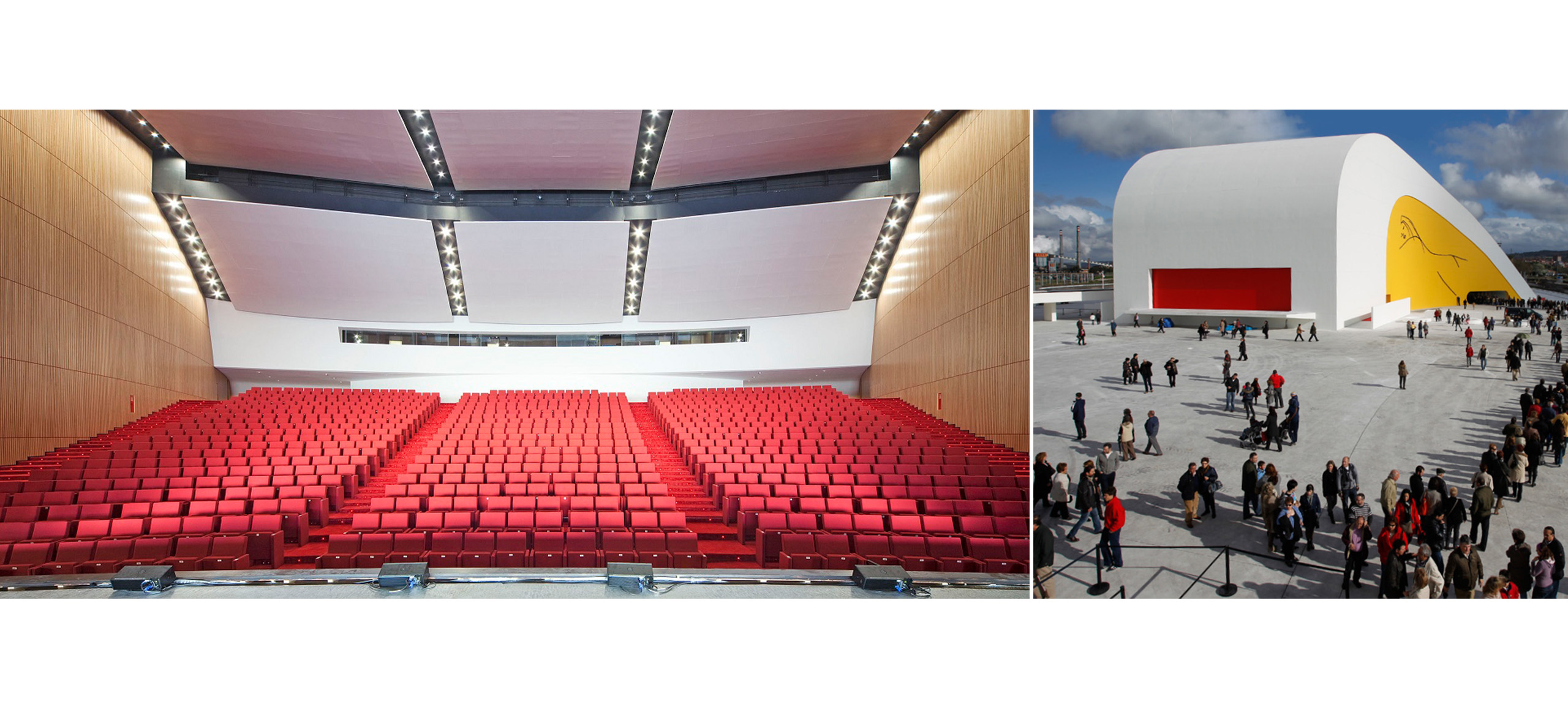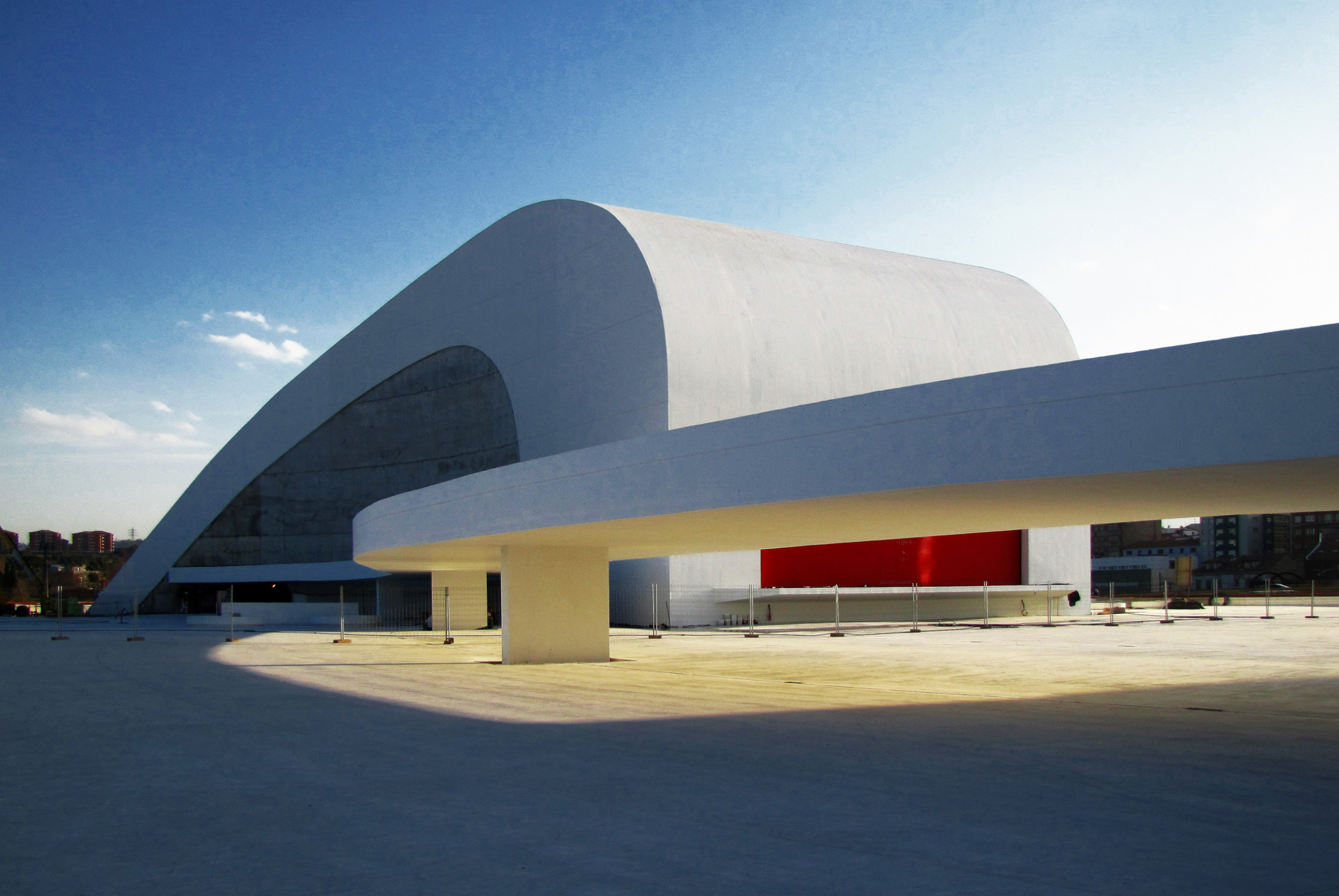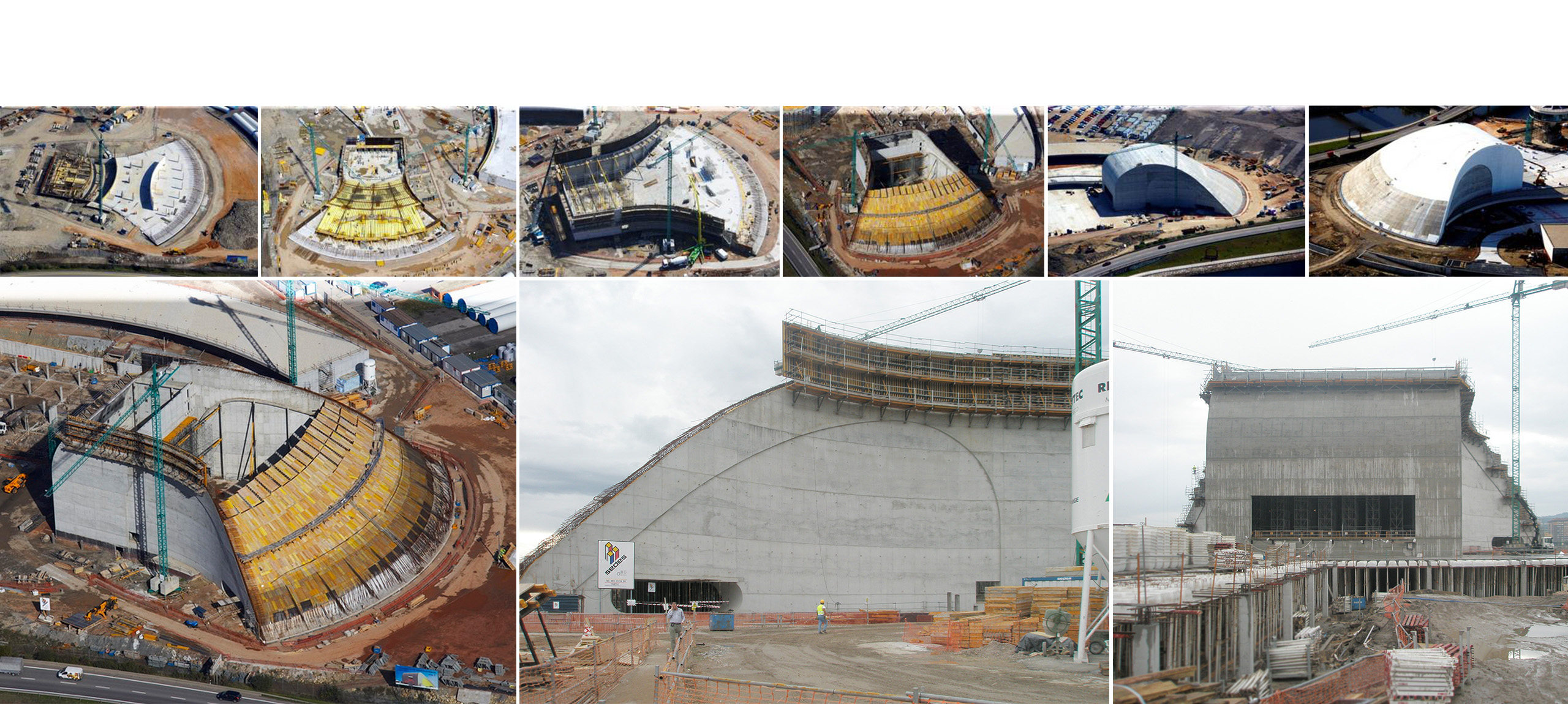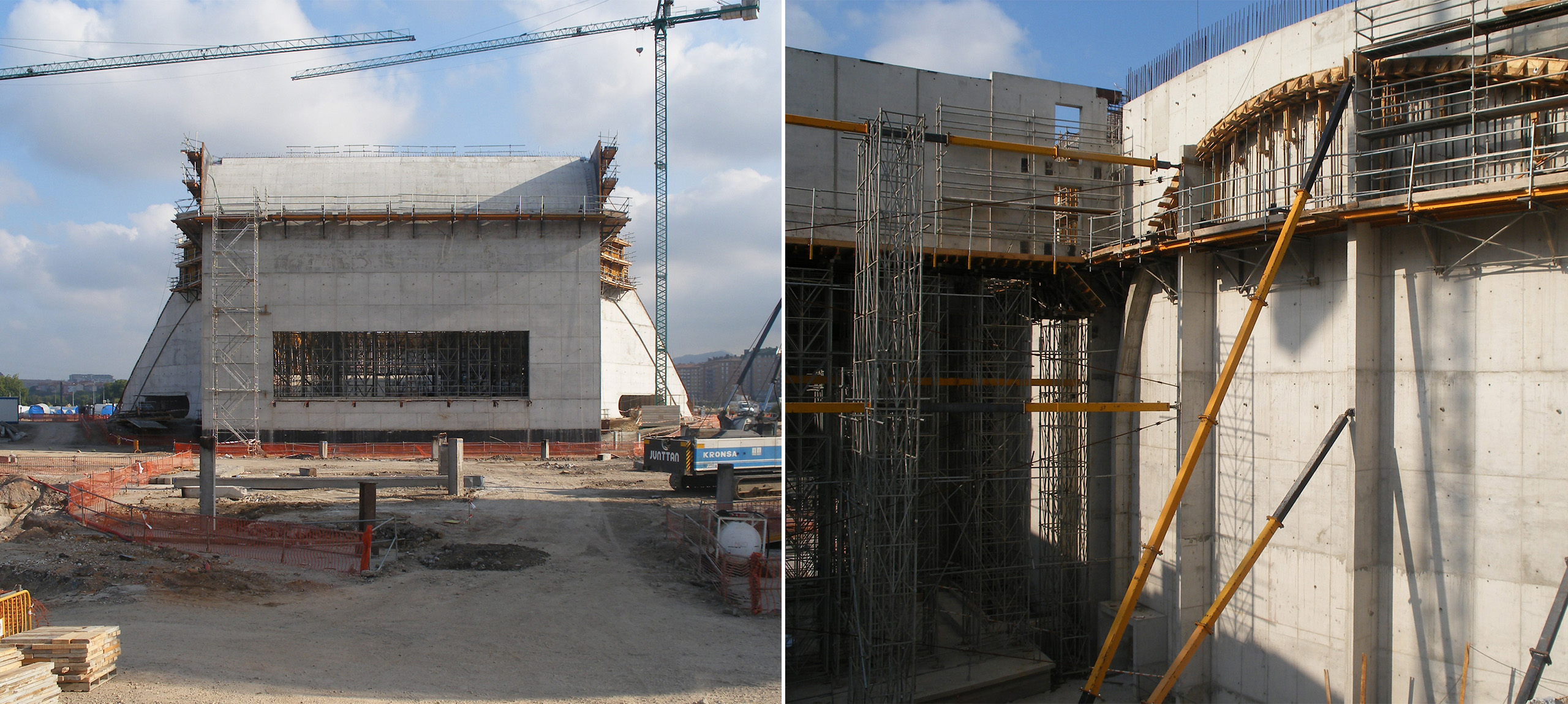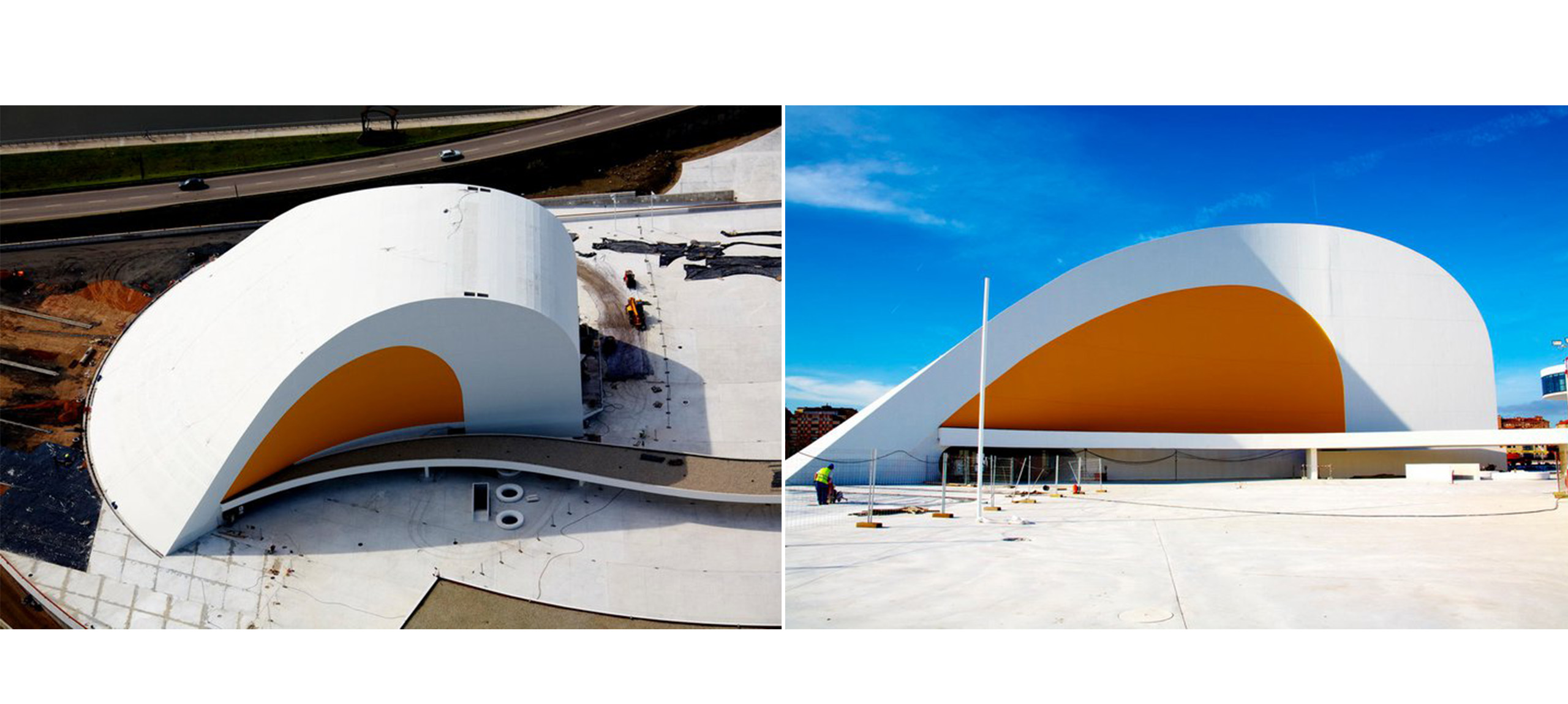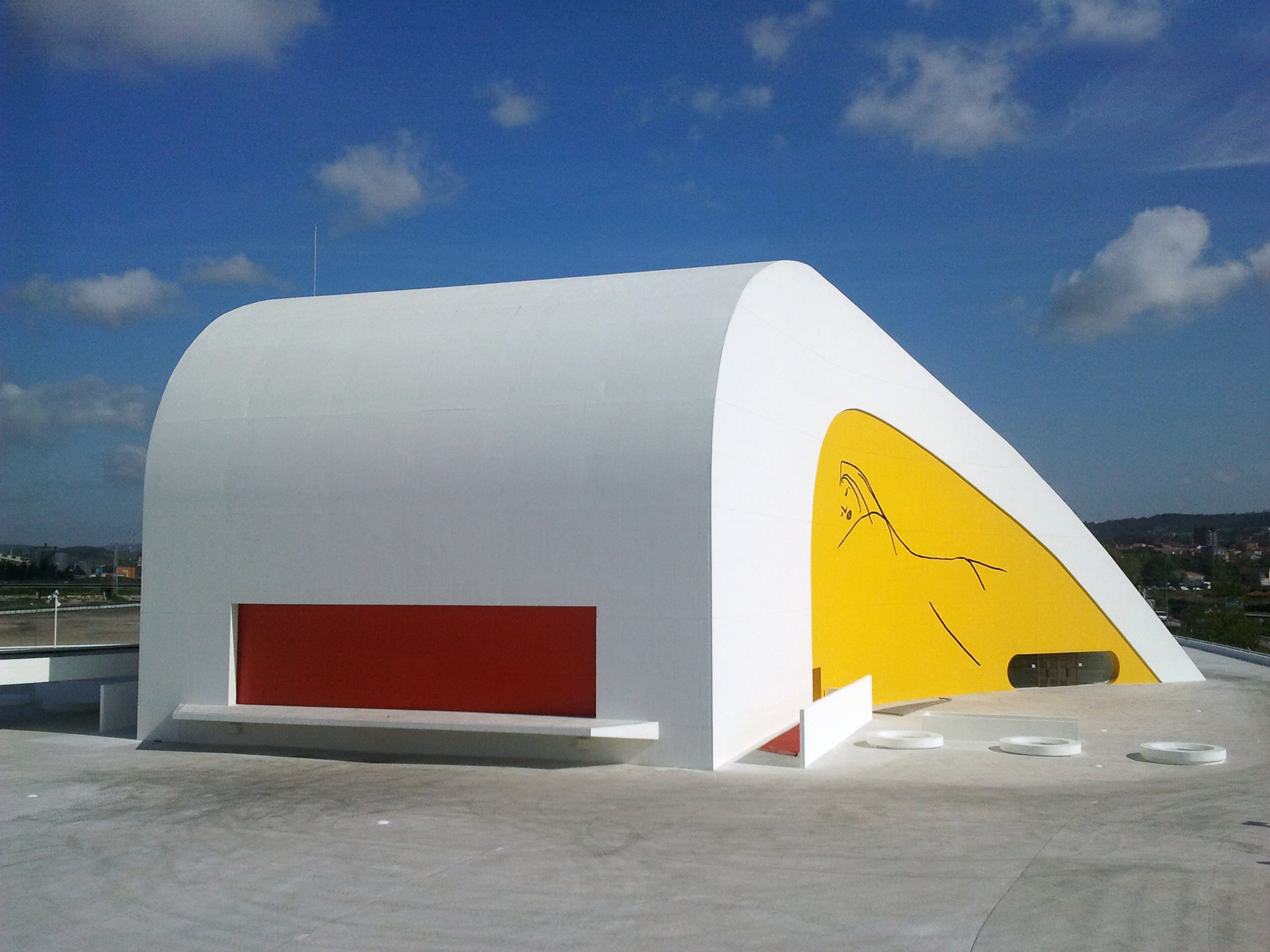
| Oscar Niemeyer Cultural Center Auditorium | |
| Avilés, Asturias | |
| Structural typology | Special Buildings |
| Date | Juni, 2010 |
| Umfang | Detailed design and construction support |
| Architect | Oscar Niemeyer |
| Owner | Principado de Asturias |
The Oscar Niemeyer Cultural Center is the only work that the centenarian Brazilian architect has in Spain and shall be the most important of those fulfilled in Europe. It is situated on the Isla de la Innovación on the Ría de Avilés in Asturias and the auditorium shall spearhead its cultural activity.
The auditorium has a capacity for 1,000 people and a constructed surface area of 7,700m2 which is distributed on two floors above grade and one below. All of this is protected with a 5,500m2 shell-shaped roof covering which favors the auditorium acoustics and has maximum dimensions of 80m in width, 75.0m in length and 26.0m in height. This roof covering is made of a 0.50m reinforced concrete slab, which is a very strict depth for something of these dimensions and which is only made possible because Oscar Niemeyer’s architectural conception integrates the structural function of double curvature within the design.
The lateral walls of the auditorium have a curved geometry on plan even if they are vertical in frontal elevation. Structurally the walls have two functions: Firstly, to close off the building with 25cm thick buttresses to resist the wind loads and to reach heights of 20.0m. Secondly, to withstand the weight and the thrust from the roof, due to the decompensation which is provoked by the architectural design and which is solved by a wall a constant 40cm thick.
The auditorium has a capacity for 1,000 people and a constructed surface area of 7,700m2 which is distributed on two floors above grade and one below. All of this is protected with a 5,500m2 shell-shaped roof covering which favors the auditorium acoustics and has maximum dimensions of 80m in width, 75.0m in length and 26.0m in height. This roof covering is made of a 0.50m reinforced concrete slab, which is a very strict depth for something of these dimensions and which is only made possible because Oscar Niemeyer’s architectural conception integrates the structural function of double curvature within the design.
The lateral walls of the auditorium have a curved geometry on plan even if they are vertical in frontal elevation. Structurally the walls have two functions: Firstly, to close off the building with 25cm thick buttresses to resist the wind loads and to reach heights of 20.0m. Secondly, to withstand the weight and the thrust from the roof, due to the decompensation which is provoked by the architectural design and which is solved by a wall a constant 40cm thick.


